Brother and sister, Milenko and Ivana, are preparing for their first harvest without their father. Milan Šijački died earlier this year, aged 58, after a short battle with cancer.
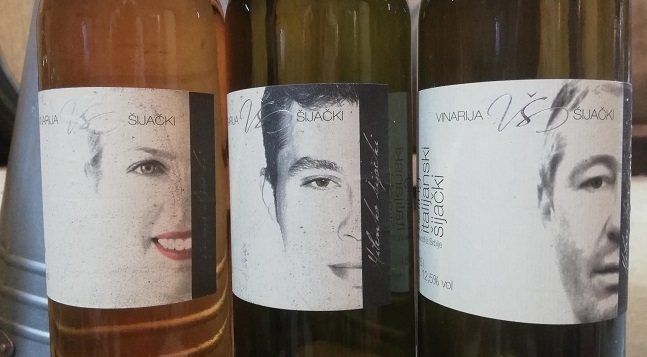
Milan’s face stares back at me from the label of the winery’s bestseller, a Graševina, the most widely planted variety in the region (called Grašac or Rizling Italijanski locally). There is also a photo of him on the pillar in the tasting room.
Milenko is the face of the family’s Chardonnay, the grapes being harvested when I arrive at the winery, one of ten registered in the village of Banoštor, in north Serbia. Milenko’s main role is taking care of the family’s 13ha of vineyards on the northern slopes of Fruška Gora. But, this afternoon, he is operating the 30-year-old horizontal screw press, which is in the yard overlooking the river.
Ivana is the face of the rosé. A trained oenologist, she recalls how the rosé became her first commercial wine. Milan had tasked his daughter with selling Muskat Hamburg table grapes in the local market, to get cash to pay the pickers. But Ivana soon became bored and suggested they make a rosé. To convince him, she had already lined up a restaurant to take the wine. She made 600 bottles and the Italian restaurant sold out within a month.
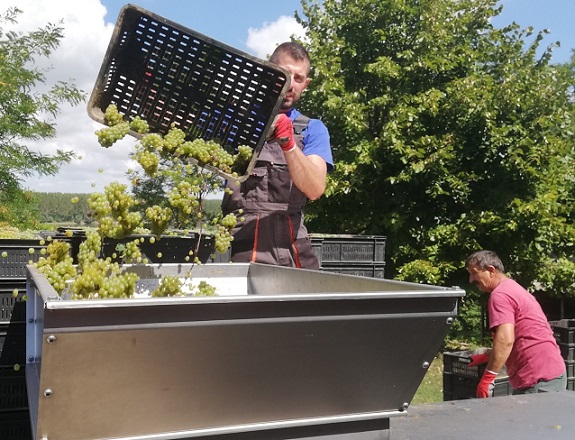
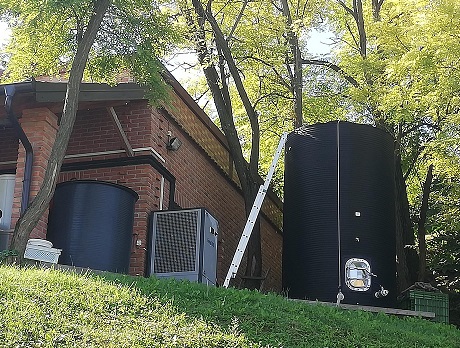
The Muskat Hamburg follows the Chardonnay into the yard. The Chardonnay, meanwhile, has gone from the press to a flotation tank (above), where nitrogen and gelatine clarified it in a few hours, and now it is resting in a 4850L stainless steel tank from Zottel (a Slovenian manufacturer). Ivana (below) lovingly nurtures the Italian yeast into 50L of froth. She says it’s this yeast, BA02 ‘blanc aroma’, which helps to give their Chardonnay a more herbal character, distinguishing it from the more typical tropical versions in the market.
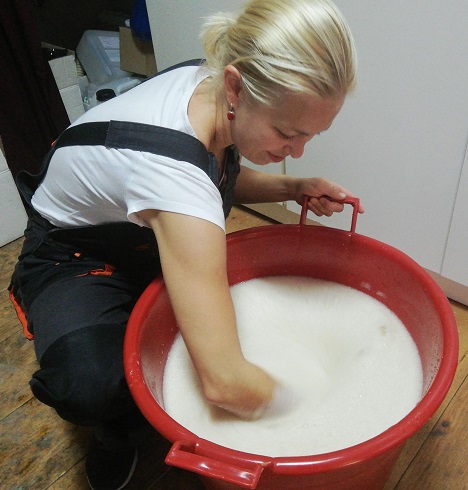
Twelve hours after starting the harvest, the must is inoculated. Nutrients will be added a third of the way through the fermentation. The winemaking techniques here are very conventional. But fresh, easy-drinking wines are what the local market demands – and Šijački sells its stock within eight to ten months.
There is no Muskat Hamburg rosé for me to try. The last bottle went out the door months ago. There is, however, an alternative – a rosé produced from Cabernet Sauvignon. Ivana convinced her father that it was better to make a good rosé than a bad red.
The winery has the capacity to produce 100,000L of wine. The Šijačkis aim to achieve this in the next two or three years after expanding to 15ha of vineyards. They currently produce about 85,000L, having grown from 15,000L 15 years ago. “For sure, we have the demand,” Ivana states.
The output is approximately 70% white and rosé wines and 30% reds. Serbian customers demand the international varieties such as Chardonnay, Riesling, Italian Riesling (Graševina), Merlot and Blaufrankisch. Tourists come to the Šijački family home and winery seeking the Serbian rarities Neoplanta and Seduša.
With such diverse varieties, the harvest period here lasts about 20 days. It’s just as well as they only have one 2.4-tonne Vaslin press and one 10,000L flotation tank. This ugly black plastic cylinder, by the way, has the most stunning views of the Danube, the nature reserve across the water and the sunrise and sunset. As well as speeding up the settling time, it reduces waste by 30%, according to Ivana.
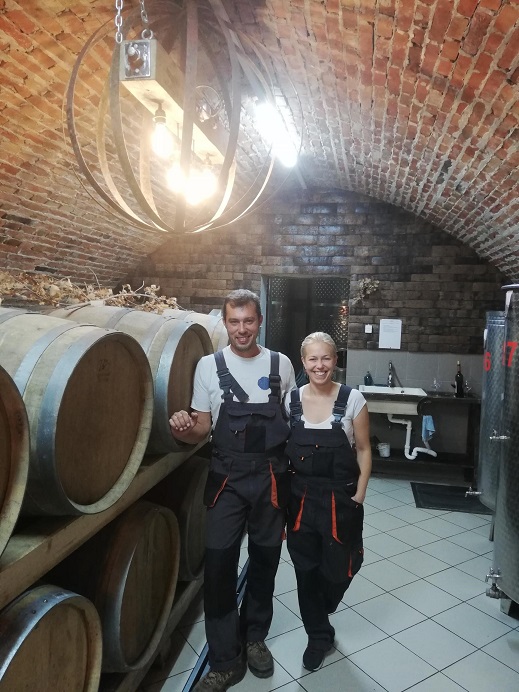
Šijački is the only winery in the world bottling Seduša, having saved this indigenous Serbian grape variety from extinction on the recommendation of Ivana and Milenko’s grandmother, Ljubica Šijački. She said it was the best grape variety she had seen “because the bunches and berries were very big,” Ivana says. “She doesn’t even drink wine – she’s allergic to alcohol – but she worked 50 years in the vineyards.”
Seduša produces a simple light-bodied red wine “that you can drink everyday”, with aromas of cherry and blackberry. Its most unusual characteristic is that all the grapes turn from green to black within one week of ripening.
The vineyard where they planted the first 150 vines “was on the parcel that my grandmother brought into the family when she got married,” Ivana says, “so her role in bringing the variety back to life was even more important.”
It took more than 10 years to research the delicate, thin-skinned grape and build up the stock from cuttings. They have about 2,500 vines now.
They launched the wine in 2016 but Milan didn’t like the result. So they reduced the yield by 60% to improve the quality and he was happy with the 2017 vintage.
The bottle carries a photo of Ljubica in the family vineyards in 1969.
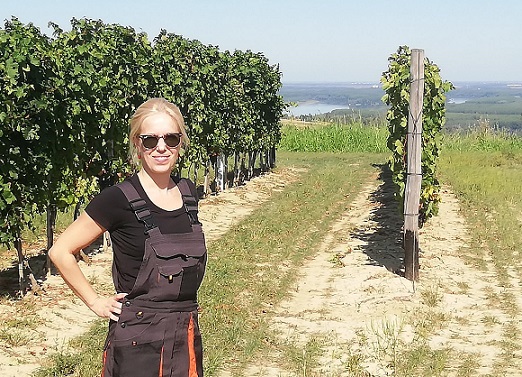
Neoplanta is their other unusual variety and it’s usually the first grape harvested. Officially recognised in 1970, it was created by Professor Dragoslav Milosavljević at the Novi Sad Faculty of Agriculture. He wanted to balance the high acidity of the native Smederevka with the intense aromas and low acidity of Traminer.
The label for this wine features the handprints of six children. The next generation is running around the yard that their great-great-grandfather created, while their parents (Ivana and Milenko have three children each) clean the press and prepare for tomorrow’s picking. This relatively new grape variety, Ivana points out, is “part of the future” for Šijački and the region.
The future also includes a new press. They are saving up for it from sales of their wines. Milan would be proud of the way his children have committed to continuing the family business.
Canopy's #harvest19
The story so far…Canopy’s #harvest19 tour from Macedonia to England started with the Assyrtiko harvest at Ktima Ligas. Thomas Ligas and daughter Meli explain how their ‘hands-off’ approach was influenced by a Japanese farmer called Masanobu Fukuoka.
At the historic Tikves Winery in North Macedonia, it’s all about control – especially when it comes to making white wines in a hot climate.
In central Serbia we visit Lastar, a new winery using different winemaking protocols for different Pinot Noir clones.
In north Serbia, we stop at the Šijački winery, in a beautiful location on the banks of the River Danube. There, we find a brother and sister in charge for the first time…


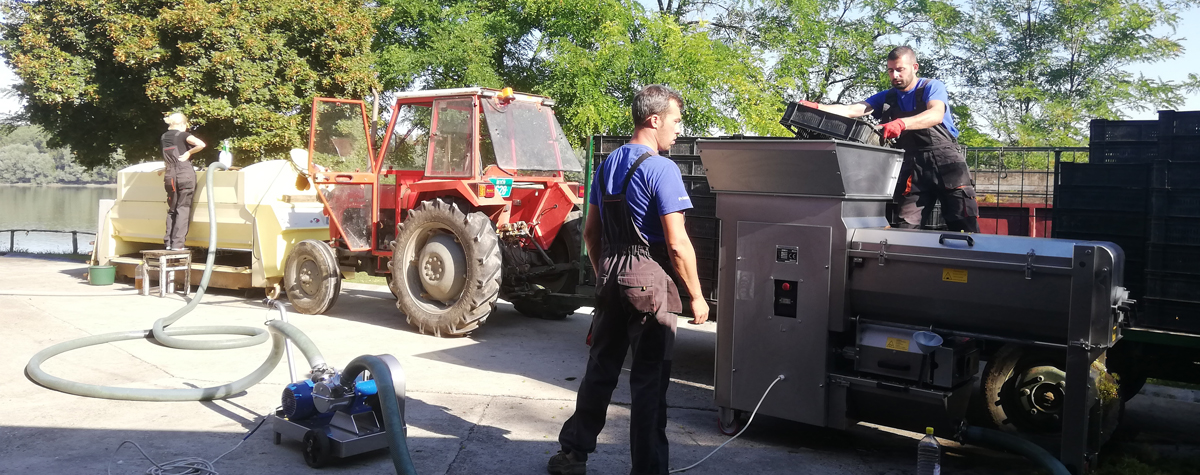










.png)






